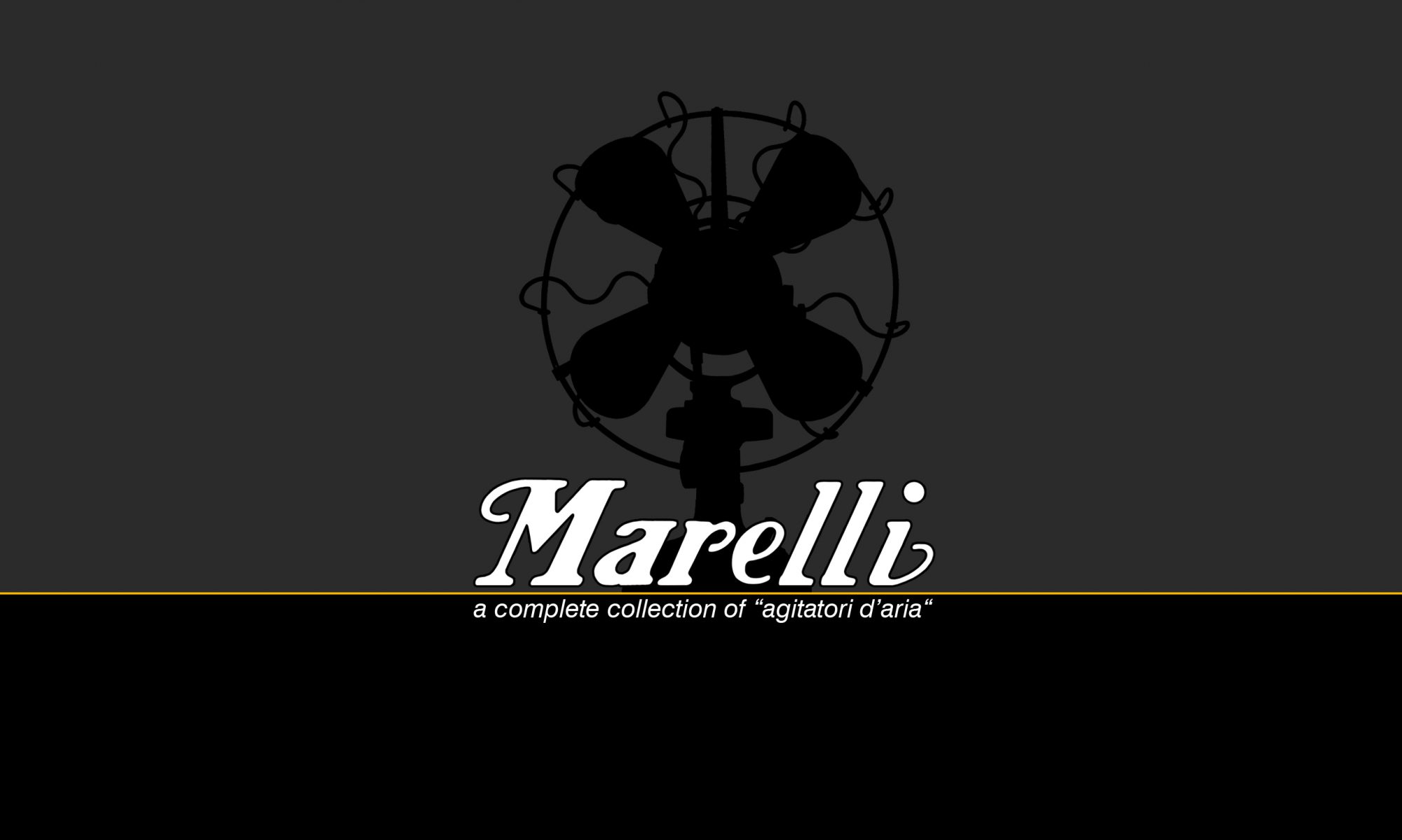Nomenclature
Early Marellis carried names as outlined on this site. With a few exceptions these names were eponyms and associated with mythological Gods, global winds and tropical air streams. By the mid 1930s (Phase 5+) Marelli dispensed with the use of eponyms and introduced a letter/numbering system to their new range of fans. Fixed (it- fisso) models were labelled F and then a number indicating the blade diameter, e.g., F-25, Inclinable (it- inclinabile, I) as I-25, I-30 etc, Oscillators (it- oscillante, O) as O-25, O-30 etc and G (it- girevole) referring to a fan that gyrated (as found with some of their ceiling fans). The meaning of DR as used in the 360-degrees partner fan, DR-14, is currently unknown although the number refers to 14 inches (the blade diameter).
Dating Marelli Fans
We have attempted to use information available to us (serial numbers, catalogs and adverts) to date fans. Having said this there are some general points that should be mentioned:
(i) When Marelli introduced a new design feature this was introduced incrementally. For example, struts commonly found in Phase 2 fans were used with Phase 1 models towards the end of their production life and it is not uncommon to see an early style cage with late style pressed steel struts. Similarly, round ended blades were used with early style cages and then with the late style cages, etc etc.
(ii) Marelli archives do show errors. For example, a Nembo/Pampero is listed as a Verno.
(iii) Adverts and catalogs can be confusing. For example, in some catalogues Phase 1 models are shown alongside Phase 4-5 models. This may suggest that popular models such as the Nembo were maintained in production.
(iv) Blades and cages are often lost and damaged and will have been replaced without regard to authenticity.
(v) Serial numbers at least from the 1940s onwards (and definitely post-WW2) do not always identify the age. This is especially true for licensed models which often carry a different serial number system. Lastly, some fans can have cannibalised tags inadvertently or deliberately added.
Where to buy Marelli Fans?
Occasionally Marelli fans will appear in antique shops, boot fairs and flea markets but the most common source is EBAY. As might be expected the Italian EBAY offers a continual source and typing “Marelli Ventilatore” will come up with a list of fans. One must be careful since not all are actually Marelli fans. It is also useful to use search terms such as antique electric fan (“antico ventilatore”), vintage electric fan or deco electric fan etc since many sellers are not aware of who the manufacturer is. The French and Australian EBAY sites are also good sources. South America, particularly Brazil and Argentina have sites similar to EBAY (Mercado Libre) that also have many Marellis for sale and S. America was one of the most important export markets for Marelli.
Vietnam has a number of shops that sell Marelli fans. In Hanoi these are in the Old Quarter and in Ho Chi Minh City a street called Le Cong Kieu near the Ben Thanh market. Shown below is a well known Marelli fan shop in the heart of the Old Quarter of Hanoi (2 Tạ Hiện Street) founded by Mr Trần Công Phúc who sadly passed away in 2017. In Mr Phuc’s shop it is possible to have fans repaired in a matter of days. Recommended is work on the motor where new windings can be installed and if necessary a 110V motor rewound to 220V or visa versa. This will typically cost <$100 and can be done in days. These shops are also good for original replacement parts and if of interest one can see the construction of their all brass fans made from genuine Marellis.
In India the Chor Bazaar in Mumbai has one street with many shops selling Marellis. Both Vietnam and India are notorious for adulterated fans but it is still possible to find plenty of originals. One reputable dealer is Mr Abdul Gani Ebrahim (Jamnadas Building, ‘B’ Block, 1st Floor, R. No. 35, Mutton Street, Mumbai-400003 (see card below). He is based in the heart of the Chor Bazaar and has a large selection of Marellis stored in his warehouse.
In Singapore there is one shop owned by a Chinese man, Mr C. Toh (586 Serangoon Road in “little India”) who has many original and interesting Marellis.



